Each new set of Flesh and Blood introduces something new and interesting - but nothing rivals the excitement of a new hero. The heroes are so elegantly woven into the lore with their abilities and themes. And if elegant isn't a word you'd ever associate with Riptide, try to see it from my point of view. You probably never thought a stinky, ripped fish-man would thread the needle between Azalea's tall attacks and Lexi's wide play patterns – but damn if there isn't something about Riptide that just feels so satisfying to play.
Fish want him, and women can't have him.
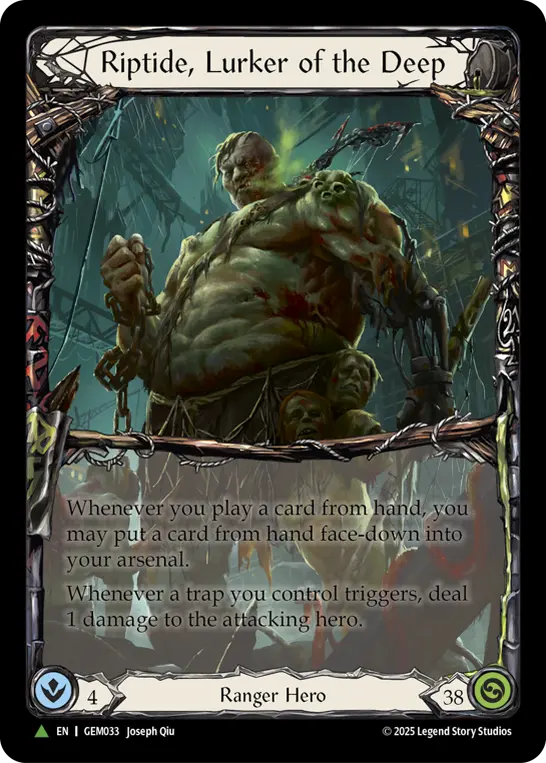
I have a friend who says that every class resonates with a certain type of person. Brute mains are laid back, chill players who just go with it; Illusionist mains are simps for their heroes; Warriors are friendly people with a strong competitive edge; and Ranger players? Well, they're sadomasochist that love to punish, but end up punishing themselves with those dud hands. Riptide is the pinnacle of that personality: punish yourself until you can eventually punish the enemy.
"But that's a Ranger thing in general, right? Why are we picking Riptide over Azalea or Lexi?"
What Riptide uniquely offers is enhanced traps and constant reload - and because of the latter, having access to those amazing overrate cards like Virulent Touch and Death Touch.

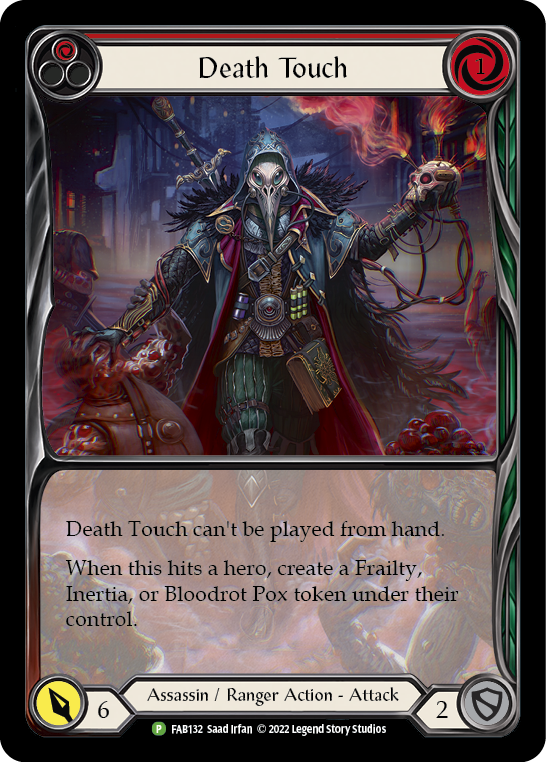
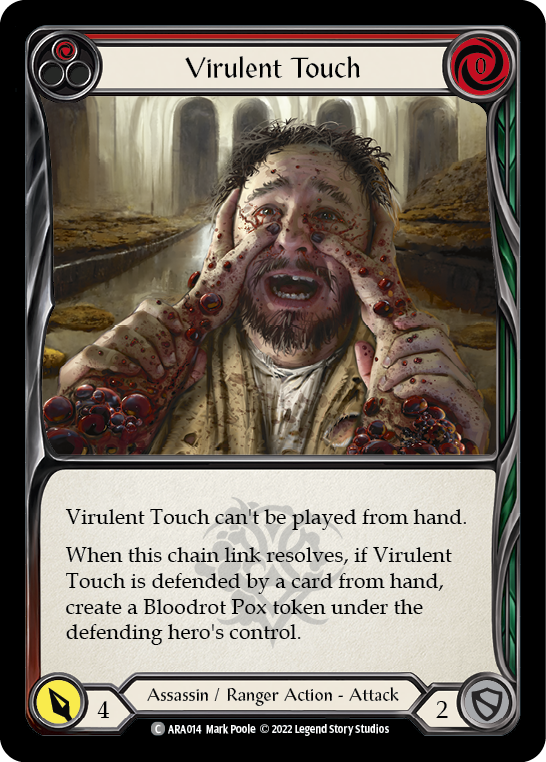
The traps are the best way to close out games - and who can deny that satisfying feeling of a well-timed defense reaction? Now add damage and disruption. Nothing feels better than a defying a Dori swinging with counters and buffs with a Buzzsaw Trap that completely wastes her cards.
Concepts
Before we get into deckbuilding, let's break down Riptide's 2 distinct abilities.
Whenever you play a card from hand, you may put a card from hand face down into arsenal.
AKA Reload. We've had that, we're used to it.
Whenever a trap you control triggers, deal 1 damage to the attacking hero.
"When a trap triggers" is key. This means when an ability on a trap is activated, not simply when you defend with a trap. Some traps will trigger on go again, some will trigger on attacks with boosted attack values, etc.

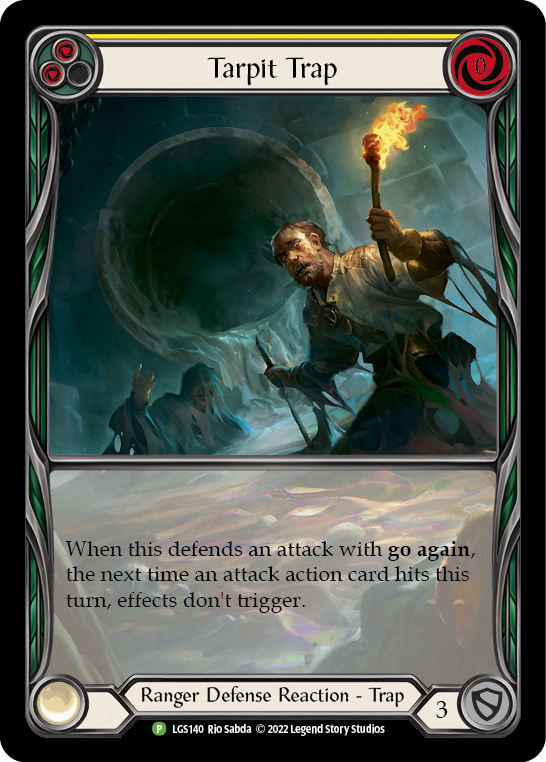
At first glance, it sounds like Riptide should be able to deal damage both on the offensive and the defensive, continuously moving the clock forward. Play a buff, load and fire an arrow. Block with traps and deal damage. Unfortunately, these strategies are just not consistent enough or potent enough to work perfectly.
I think this hero has tons of unique ways to build him. As a community, we already have advocates for many different approaches: go tall arrow, go wide arrow, trap focused, Talishar, Bull-tide.
On the side, I'm working on a build around Barbed Castaway and 2-resource turns, as many of our best traps pitch for 2 and we can make the math pretty consistent with arrows, aim, and buffs. It mainly focuses on threatening on-hits that slow the game down while pitching traps that can close out the game. This build hasn't had much testing yet, but I feel that, with the resource curve and the way his cards work, in theory there should be a build out there eventually that can successfully utilize this concept.
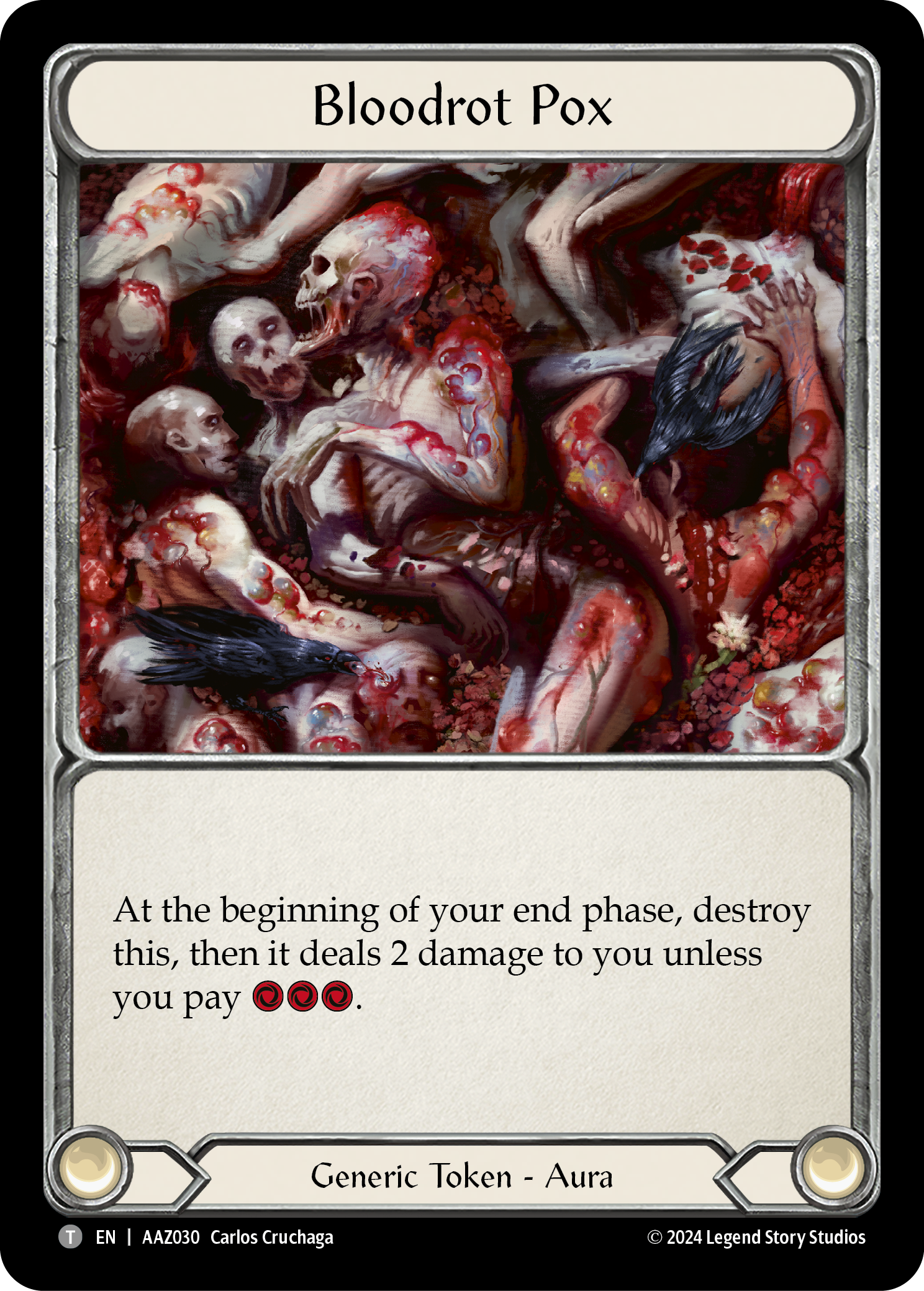
But my primary focus has been on a Pox build, and that's what we're getting into today. After testing consistently, I have found that I enjoy this build the best, which boasts near-unpreventable damage, trap damage, and Bloodrot Poxes.
My build relies on strong turns pumping a card like Death Touch or Virulent Touch, sitting on a Razor Reflex to make sure it hits, creating Bloodrot, then pitch stacking traps and Virulent Touches/Codex of Frailties to close the game out.


I settled on this build because across all my testing, I found that Riptide has a few glaring issues:
- No weapon = fatigue risk
- He has no way to ensure attacks hit.
- Traps don't always trigger and only block for 3.
To the last point, you have to know which traps to side in for which heroes, so having an understanding of our matchups and what each hero does is huge. For example, go again traps usually help against Ninjas, buff-attack traps usually help with Rangers, and attack reaction traps help with Assassins; and all 3 help with Warrior, but nothing helps with Dromai or Guardians.
The Deck

Weapons
- Death Dealer (1)
Equipment
- Driftwood Quiver (1)
- Bull's Eye Bracers (1)
- Crown of Providence (1)
- Fyendal's Spring Tunic (1)
- Snapdragon Scalers (1)
- Toxic Tips (1)
Loadout
- Collapsing Trap (Blue) (1)
- Buzzsaw Trap (Blue) (1)
- Codex of Frailty (Yellow) (2)
- Death Touch (Yellow) (3)
- Nimblism (Red) (3)
- Razor Reflex (Red) (3)
- Death Touch (Red) (3)
- Boulder Trap (Yellow) (3)
- Tripwire Trap (Red) (3)
- Codex of Bloodrot (Yellow) (3)
- Pitfall Trap (Yellow) (3)
- Inertia Trap (Red) (3)
- Razor Reflex (Yellow) (2)
- Take Aim (Red) (3)
- Pendulum Trap (Yellow) (3)
- Remorseless (Red) (3)
- Oasis Respite (Red) (3)
- Premeditate (Red) (3)
- Rockslide Trap (Blue) (1)
- Scout the Periphery (Red) (3)
- Bloodrot Trap (Red) (3)
- Sigil of Solace (Red) (3)
- Endless Arrow (Red) (2)
- Spike Pit Trap (Blue) (1)
- Tarpit Trap (Yellow) (3)
- Virulent Touch (Red) (3)
- Death Touch (Blue) (3)
- Ravenous Rabble (Red) (3)
Despite Barbed Castaway being his signature weapon, I found that Death Dealer was a much better fit for this build. When you do run those arrows, you need the buffs to out-value your opponent; so getting that draw with another chance to buff is huge.
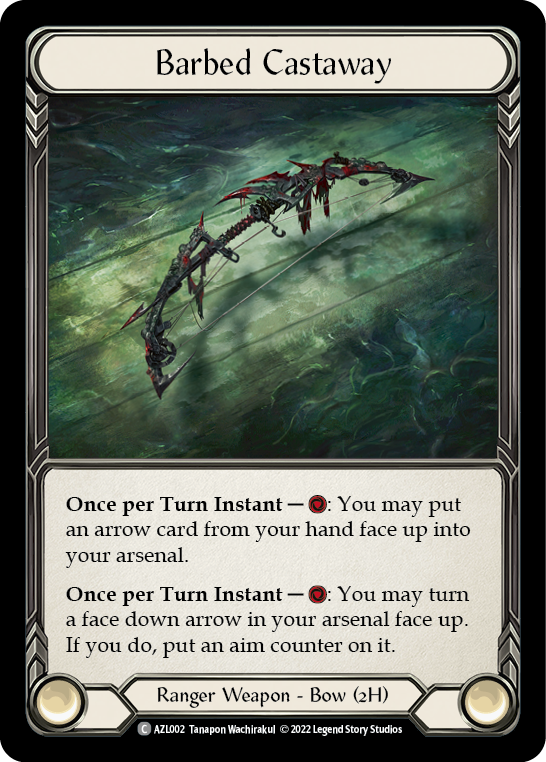
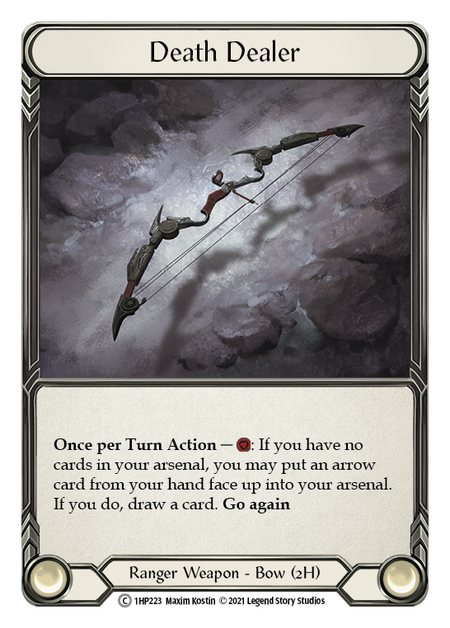
I run Crown of Providence for the 2 block, and because it helps clear clogged arsenals (in case a trap gets stuck there). It also helps filter a bad hand if things are dire. Bull's Eye Bracer is an improved Nullrune for our Wizard and Runeblade matchups, but in most games I run Toxic Tips; I love the flavor of this card and my build is going for the ultimate Pox build. Snapdragon Scalers facilitate a big endgame combo - ideally, Death Touch into Virulent Touch.

I run Tunic, not Trench, as I have found I don't get enough value from Trench in a game. It's an awesome card and I want to use it, but even when I forced myself it never gave the value that Tunic did.


Death Touch and Virulent Touch are, of course, hallmarks of the deck. I can't overemphasize how often Virulent Touch closes a game. This card is absolutely insane! It threatens 4 damage, and if they block it still threatens 2; if you play 1 buff on it late game, you can potentionally just kill your opponent no matter what they do. I always pitch this card early game and try to set up a buff near it as well.
I also run Ravenous Rabble for the go again and easy reload; it combos very well with either of the cards above.



I run Remorseless and Endless Arrow, but that's it for arrows. Remorseless fits the theme of the near-unpreventable damage; it's basically a poison on their turn that slowly widdles them down if they let it hit. And Endless... well, it's Endless! If they let this hit, it's coming again, and again, and again.
I was running Infecting Shot and Drill Shot, and I think there's a place for these as well, but I found they got in the way of my other plans.




Because of my low arrow count, I run mainly non-arrow buffs: Nimblism, Premeditate, Scout the Periphery, and Take Aim (which buffs Ranger attacks Death Touch and Virulent Touch).
I run two Codexes: Bloodrot and Frailty. The former is simply obligatory due to the theme, but the Codex of Frailty has insane potential with this hero. We can basically block out a whole turn from the enemy, keep Codex of Frailty either in hand or arsenal, and grab one of our key attacks back from graveyard. Death Touch for 6+ Bloodrot (so threatening 8 damage all told) off a 1-card hand is pretty insane.


I run Sigil of Solace and Oasis Respite to offset my health disadvantage, as I found I was losing many games by 1-2 health in the end. They also trigger an instant-speed reload with Riptide, so it's a win/win.



As far as traps go, I recommend running his 3 specialization traps in every match; even if these don't go off, they're blue pitch cards that block 3. On top of that, I run 2 Tripwire Traps and 3 Pitfall Traps; because they always 'trigger', they're great for closing games with guaranteed damage. If you can wait until the enemy has no resources or cards in hand before playing Pitfall Trap, that's 3 damage right there.


The rest of the sideboarded traps come in for particular matchups, based on what tactics your opponents use. When used at the right moment, they have incredible value; sometimes it's worth taking a bit of damage to sit on a trap knowing the effect is more likely to trigger on the next attack.
In Closing...
I think Riptide is skill testing in the best way. He's super complex with his play lines, and relies on knowledge of every hero you are up against. He also relies on some higher level concepts, like pitch stacking, determining efficient card value, and knowing how/when to take a pivot turn.
The reload ability is an amazing tool for Ranger, and the traps are such a cool concept with their unpreventable 1 damage when they trigger. They can really put in work.
It's hard to crack the deckbuilding portion, juggling the ratios of buffs, attacks, traps, and attack reactions. Decks with so many lanes often lead to some really awful hands - but that's the Ranger way!




